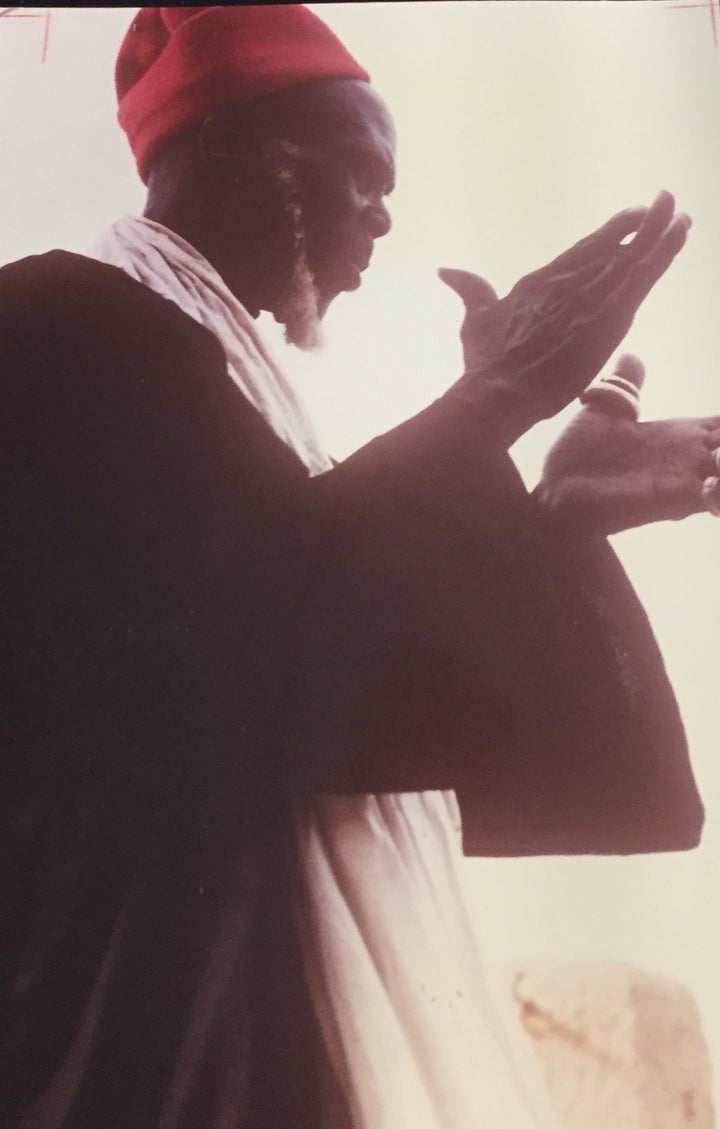
Doing Anthropology and Following the Long Path with Sohanci Adamu Jenitongo of Tillaberi, Niger
We live in troubled times. In America, we have as president a dangerously unstable and profoundly ignorant man bent on undermining free speech, expanding income inequality, and denigrating women and minorities as he gives a permissive wink to the divisively destructive forces of white supremacy. Beyond American shores, the spread of anti-immigrant populism has unleashed floodwaters of hate in Europe. In 21st century North Africa, slavery, of all things, has re-merged. And let us not forget that the spread of religious intolerance that has led to incessant civil war, to political instability and to the scourge of terrorism.
Meanwhile, we are witness to profound and seemingly irreversible environmental devastation. Climate change has not only brought on the extinction of many species, but has also triggered super storm destruction in West Africa, the Caribbean, and the Southeast of the United States. It has melted ice shelves in the Arctic and the Antarctic and has produced epic floods and deadly epidemics. In this worrisome climate, though, there seems little political or social will to change the destructive human consumption practices that threaten our very existence.
This state of affairs, of course, is old news.
In this climate of old news, however, many important questions remain under-explored.
--What does the politics of hate do to social relations?
--What are the social costs of expanding income equality?
--What are the social and environmental consequences of the global spread of ignorance?
---How will we confront the profound consequences of the massive social dislocations that climate change will unleash?
These are no simple quick fix answers to these profoundly complex anthropological questions. Indeed, anthropologists have developed the insights, based upon years of on-the-ground ethnographic field study, to step into the public sphere and provide a much-needed dose of perspicacious reason.
The path toward recovery, however, is a long one. It took many years of sustained educational neglect and persistent social, cultural and political propaganda to construct the alternate reality of Trumpism. Indeed, it will take many years of sustained argument and energized education to restore our political system, preserve our democracy, enhance our social relations and reestablish a healthy measure of human dignity. As Sohanci Adamu Jenitongo of Tillaberi, Niger liked to say: The path (toward wisdom) may be long, but it’s one well worth taking.
How can anthropologists proceed on the long path to a better future?
1. Public Anthropology in the Classroom. If you teach undergraduates, you are a public anthropologist. When you teach introductory anthropology, you are exposing students to the power of scientific and anthropological insight. In the classroom, you are an intellectual guide who can show thousands of students how to separate fact from fiction. In the classroom, you are truly the public face of anthropology and your scholarly obligation is to teach students how to use the tools of science to think for themselves.
2. Public Anthropology in Text and Film: It is important to continue to write journal articles and monographs and produce films that refine our knowledge of the human condition. Unfortunately, too many scholars tend to produce these works in remote, bloodless prose or in a series of narrowly focused images that, as Jean Rouch used to say, don't have a good story to recount. As a result, important anthropological insights are not widely known. Why not take up the greatest challenge to any writer or filmmaker: to transform a complex subject into elegantly simple prose or a deceptively simple documentary that can reach a wide audience. Indeed, powerful anthropological insights can be conveyed through narrative ethnography, creative non-fiction, films of ethno-fiction, fiction, (including graphic novels), drama and poetry.
3. Pubic Anthropology and Social Media. Social media platforms have become an important way for anthropologists to convey their insights in the public sphere. There are hundreds of anthropological bloggers who routinely write about a wide variety of issues of social, cultural, political concern. For anthropologists blogging can be a blissful experience. If an anthropological blog hits all the right notes at the right time, a huge number of people (50,000 to 100,000) are likely to read it, think about it, or comment on it. In some cases that blog may provoke a reader to think about “x” in a new way. Even so, blogs tend to be short—little chance for nuanced argument. They also have a short shelf life—perhaps 24 hours, if you’re lucky. In every dimension of anthropological blogging it is essential to be persistent. No matter the number of “likes” and “shares” one blog may attract, that one entry is not likely to change an attitude or a course of action. Given the realities of the blogosphere, it will take a steady stream of anthropological blogs on politics, social relations, income equality, immigration, racism, religious intolerance and climate change to gradually help to restore our social integrity. The same can be said of multiplex representations on anthropological websites.
4. Public Anthropology, Media Installations and Museums. Museums are often the taken-for-granted public face of anthropology. Each year, millions of people visit museums and confront—visually and textually—anthropology and its insights. The visceral impact of anthropologically contoured media installations (about climate change, prehistory, migration patterns, immigration, material culture, and race) can be substantial. Just as we are often unaware of the existential effect of our teaching, so too we are sometimes ignorant of the public impact of exhibits in anthropological museums. The outreach potential of the ongoing installation, Ethnographic Terminalia, for example, is substantial and, for me at least, unlimited.
The contemporary climate for democracy, for science, and for the tolerance for religious and social difference is grim. And yet if we keep conveying our important anthropological messages about the texture of social life, our insights can gradually help to restore a measure of social decency in our public discourse and provoke the attitudinal change that will safeguard our future.
In troubled times, doing anthropology matters.
